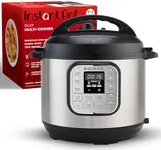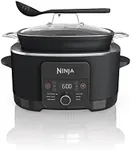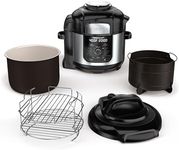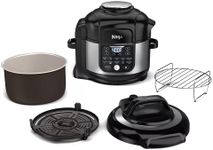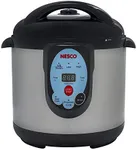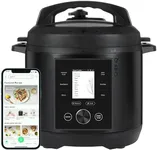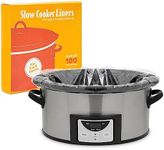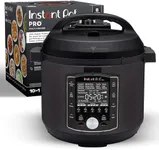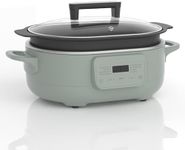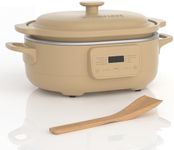Buying Guide for the Best Digital Pressure Cookers
Choosing the right digital pressure cooker can make your cooking experience more efficient and enjoyable. Digital pressure cookers are versatile kitchen appliances that can save you time and effort by cooking food quickly while preserving its nutrients and flavors. To find the best fit for you, it's important to understand the key specifications and how they align with your cooking needs and preferences.CapacityCapacity refers to the amount of food the pressure cooker can hold, usually measured in quarts or liters. This is important because it determines how much food you can cook at once. Smaller capacities (3-4 quarts) are suitable for individuals or small families, while medium capacities (5-6 quarts) are ideal for average-sized families. Larger capacities (8 quarts or more) are best for large families or those who like to batch cook or entertain. Choose a capacity based on the number of people you typically cook for and the types of meals you prepare.
Power (Wattage)Power, measured in watts, indicates how quickly the pressure cooker can heat up and cook food. Higher wattage means faster cooking times. Low wattage (600-800 watts) is sufficient for basic cooking needs, while medium wattage (900-1000 watts) offers a good balance of speed and efficiency. High wattage (1200 watts or more) is ideal for those who want the fastest cooking times and the ability to handle more demanding recipes. Consider your cooking habits and how quickly you need your meals to be ready when choosing the wattage.
Preset ProgramsPreset programs are pre-configured settings for specific types of dishes, such as rice, soup, meat, or yogurt. These programs simplify the cooking process by automatically adjusting the time and pressure for optimal results. The number of preset programs can vary widely, from a few basic options to over a dozen specialized settings. If you prefer convenience and ease of use, look for a pressure cooker with a variety of preset programs that match the types of meals you frequently prepare. If you enjoy experimenting with different recipes, a model with customizable settings might be more suitable.
Safety FeaturesSafety features are crucial in a pressure cooker to prevent accidents and ensure safe operation. Common safety features include pressure release valves, locking lids, and automatic shut-off. More advanced models may offer additional safety mechanisms like lid detection and temperature control. When choosing a pressure cooker, prioritize models with comprehensive safety features to protect yourself and your kitchen. If you have children or are new to pressure cooking, these features are especially important.
Material and Build QualityThe material and build quality of a pressure cooker affect its durability and performance. Stainless steel is a popular choice for its durability, resistance to staining, and even heat distribution. Non-stick coatings can make cleaning easier but may wear out over time. Aluminum is lightweight and heats up quickly but may not be as durable as stainless steel. Consider how often you will use the pressure cooker and your preference for ease of cleaning when selecting the material. A well-built pressure cooker will last longer and provide better cooking results.
Ease of CleaningEase of cleaning is an important factor, especially if you plan to use your pressure cooker frequently. Look for models with dishwasher-safe components, such as the inner pot and lid. Non-stick coatings can also make cleaning easier, but they require gentle handling to avoid scratches. Removable parts and simple designs with fewer crevices can help reduce cleaning time. If you value convenience and want to minimize cleanup effort, prioritize pressure cookers that are easy to disassemble and clean.
User InterfaceThe user interface includes the control panel and display of the pressure cooker. A clear, intuitive interface makes it easier to select settings and monitor the cooking process. Digital displays with touch controls are common and can offer a modern, user-friendly experience. Some models may also have manual dials or buttons. Consider your comfort level with technology and how easy you find it to navigate different controls. A user-friendly interface can enhance your overall cooking experience and reduce the likelihood of errors.
